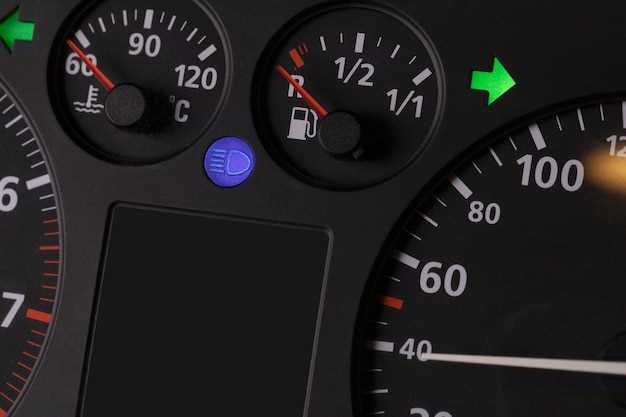

Low engine performance can present a significant challenge for vehicle owners, affecting both safety and efficiency. When the power output of an engine diminishes, it can lead to a cascade of problems that compromise the overall driving experience. Identifying the root causes of these performance issues is essential for maintaining optimal engine function and preventing further damage.
Common problems associated with low engine power may stem from various sources, including fuel delivery issues, ignition system failures, or mechanical malfunctions. Understanding these potential culprits can help in diagnosing the precise nature of the issue. For instance, a clogged fuel filter may disrupt fuel flow, while a faulty spark plug can hinder effective combustion, both of which directly impact engine power.
In addition to the mechanical components, external factors such as environmental conditions and maintenance practices can also play a crucial role in engine performance. Regular inspections and prompt attention to warning signs can greatly enhance the longevity of the engine and ensure that power output remains consistent. By taking a proactive approach to diagnosis, vehicle owners can effectively address low engine performance issues before they escalate into more extensive and costly repairs.
Identifying Common Signs of Power Loss in Engines

Low engine performance often manifests through several clear signs that indicate potential problems. Recognizing these symptoms early can help diagnose the underlying issues affecting engine power.
One of the most common signs of power loss is a noticeable decrease in acceleration. When a vehicle struggles to gain speed, it may indicate engine inefficiency or underlying mechanical problems. Drivers may also experience unresponsive throttle, where pressing the accelerator does not yield the expected increase in power.
Another indication of power loss can be engine misfiring, which can result in uneven power delivery. Misfires can stem from issues such as faulty spark plugs, fuel delivery problems, or compression loss, all contributing to decreased overall power.
Reduced engine efficiency is often accompanied by poor fuel economy. When an engine operates below its optimal performance level, it may consume more fuel to maintain the same power output, raising concerns for efficiency and indicating potential underlying issues.
Excessive exhaust emissions can also signal power loss, as engines struggling to operate correctly may emit more pollutants. Unusually high levels of smoke or strange odors can indicate problems with fuel combustion, suggesting that the engine is not performing efficiently.
Hesitation or stalling during operation can further indicate power-related issues. Vehicles may hesitate to respond when the accelerator is pressed, and stalling can result from a variety of factors, including fuel starvation or electrical failures within the engine management system.
Lastly, abnormal noises such as knocking or grinding sounds can indicate serious power loss issues. These noises may arise from failing components, leading to reduced performance and possibly extensive damage if not addressed promptly.
In conclusion, identifying these common signs of low engine power can help pinpoint problems early, facilitating effective repairs and restoring performance levels.
Assessing Fuel System Malfunctions and Their Impact
The fuel system plays a crucial role in engine performance, directly influencing the power output and overall efficiency. When malfunctions occur within this system, drivers often experience low engine performance, characterized by reduced power and sluggish acceleration.
Common issues that can arise within the fuel system include fuel pump failure, clogged fuel filters, and malfunctioning fuel injectors. A failing fuel pump may not provide sufficient fuel pressure, resulting in inadequate fuel delivery to the engine. This can lead to symptoms such as rough idling, stalling, and, critically, a noticeable drop in power during acceleration.
Clogged fuel filters can also impede fuel flow, causing stress on the engine components. When the engine does not receive the expected amount of fuel, it may compensate by running richer or leaner, which can further exacerbate performance issues and even lead to potential engine damage over time.
Additionally, malfunctioning fuel injectors can lead to improper fuel atomization, causing inconsistent fuel delivery. This inconsistency can manifest as low power output, especially under load or during high-demand situations like climbing hills or merging onto highways.
Diagnosing these fuel system malfunctions requires careful assessment of fuel pressure, injector function, and filter condition. Using diagnostic tools, mechanics can identify whether low engine performance stems from fuel system issues or if other components are contributing to the problem.
Addressing fuel system malfunctions promptly is essential for restoring lost power and ensuring optimal engine function. Regular maintenance, including fuel system cleaning and filter replacement, can help prevent these issues and sustain engine performance over time.
Evaluating Mechanical Components that Contribute to Reduced Power

When addressing low engine performance problems, it’s crucial to evaluate various mechanical components that can significantly hinder power output. Several elements within the engine’s system can contribute to reduced performance, necessitating a thorough examination.
Firstly, the condition of the ignition system plays a vital role in engine efficiency. Worn spark plugs or faulty ignition coils can lead to incomplete combustion, causing a decline in power and acceleration. Regular inspection and timely replacement of these components ensure optimal engine performance.
Another key area to assess is the fuel delivery system. Clogged fuel injectors or a failing fuel pump can restrict fuel flow, resulting in a lean mixture, which directly impacts engine power. Ensuring that these components are clean and functioning properly can help mitigate low engine problems.
The air intake system also deserves attention. An obstructed air filter can limit airflow, leading to reduced engine performance. Additionally, issues with the mass airflow sensor can result in incorrect readings, affecting the air-fuel mixture and ultimately causing power loss. Regular maintenance of the intake system is essential for maximum performance.
Furthermore, the exhaust system must be evaluated for blockages or leaks. A damaged catalytic converter or exhaust manifold can create back pressure, which teams up with the engine’s natural efficiency to create low power output. Monitoring the exhaust pathway for damages is necessary to maintain peak engine function.
Lastly, inspecting the drivetrain components, including the transmission and differential, is crucial. Slipping gears or a failing transmission can hinder power delivery to the wheels, exacerbating low engine performance problems. Ensuring these components are in good condition can enhance overall engine effectiveness.
In conclusion, evaluating these mechanical components is fundamental in diagnosing and rectifying issues related to low engine performance. A comprehensive check can reveal underlying problems that, once addressed, can restore the engine’s power and efficiency.







